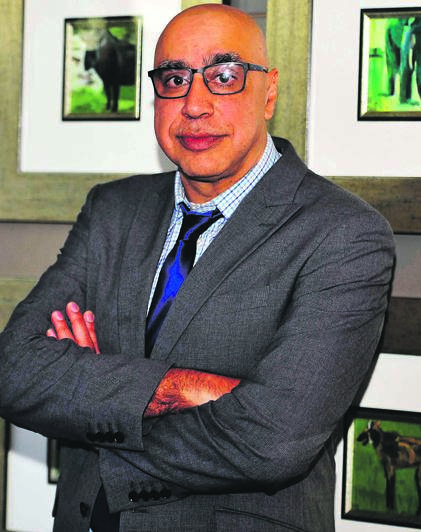
The ability to stimulate the economy through interest rate cuts is very limited if business is not confident about the economy, municipalities are dysfunctional and the consumer is under stress.
This is according to SA Reserve Bank Deputy Governor Rashad Cassim during an interview in Johannesburg on Friday.
President Cyril Ramaphosa on July 10 announced that he had reappointed Lesetja Kganyago for a second term as Reserve Bank governor and filled the two vacant deputy governor positions by appointing Nomfundo Tshazibana and Cassim, who will take up his new role on August 1.
Local consumers and businesses could be paying interest rates that are too high relative to the level of consumer inflation and low level of economic growth.
This is the broad view of South Africa’s major trade union federations, a number of local economists and local business organisations this week.
Lullu Krugel, PwC Strategy& chief economist for Africa, and Christie Viljoen, PwC Strategy& economist, said in a note that the Taylor rule of monetary policy calculation suggested that South Africa’s interest rates were 1% higher than they should be.
This was before this week’s 0.25% cut in the repo rate announced by Kganyago.
Cassim said: “The Taylor rule is based on a paper written by John B Taylor, an academic economist at Stanford University, in 1993.
“The Taylor rule is a very important equation that informs the forecasting model of the Reserve Bank.
“It is your discipline against which you make your argument. They are not mechanical things...
“At the May Reserve Bank monetary policy committee, the Taylor rule said to loosen in the first quarter of next year by 0.25%. In this meeting, the Taylor rule said to loosen in the fourth quarter of this year.”
The Black Business Council said that a decrease in the repo rate would give government the necessary window to assess further mitigating policies to steer the economy away from a potential recession.
GROWTH FORECAST
North-West University Business School economist Raymond Parsons said that the Reserve Bank had yet again reduced its growth forecast for the year, this time from 1% to 0.6%, and that there needed to be further robust debate around the future appropriate monetary policy response in these economic circumstances.
FNB chief economist Mamello Matikinca-Ngwenya said in a note that there was a global tilt towards reducing interest rates, with the Federal Reserve expected to ease rates. This could provide room for a further easing of monetary policy in South Africa.
Cosatu said that this week’s 0.25% cut in interest rates was welcome, but it fell far short of the federation’s calls for a “radical decrease in interest rates to stimulate the economy and create new, decent jobs”.
Regarding whether local interest rates where high, given the level of economic growth at less than 1% and consumer inflation at the midpoint of the inflation target range between 3% and 6%, Cassim said: “Basically, the story is as follows: When you think of an economy and think of economic growth, there are two essential vantage points.”
MONETARY POLICY
“The first is that you look at trend economic growth. What is the long-term growth potential of this economy, given the human resources, productivity, investments levels, and so on?
“We used to say that South Africa was a 3% economy. China is a 7% and 8% economy,” Cassim said.
“We now say that South Africa is basically a 1% to 1.5% economy. That is a very important starting point about how you think about monetary policy. We are a country that has 1% economic growth and 4.5% inflation. The key thing about monetary policy is that for the growth levels we have inflation is relatively high if we compare ourselves internationally,” he said.
“I think if growth is where it is because monetary policy is too tight – that’s one thing. However, if growth is where it is because of many other factors then there is not much that monetary policy can do by way of dealing with the problem,” Cassim said.
INFLATION TARGET
A key aspect relating to any interest decision was that there was an inflation target to consider, he said.
“The interesting thing about our price stability is that a 3% to 6% [inflation target] is quite a generous target compared with other emerging market peers – ignoring one or two exceptions such as Turkey. Even in Brazil the inflation target is 4%.
“The average Latin American country’s inflation target is between 2% and 3%. The average Asian emerging market inflation target is 2% to 3%,” he said.
Regarding this week’s interest rate cut, Cassim said: “I think one of the reasons we cut interest rates was because we were of the view that there was slack in the economy and we were of the view that inflation was moderating.
“We were of the view that the state of the economy was worse than what we thought. That is why we cut [the repo rate]. I can’t say we are in the cutting cycle.”
 |
| ||||||||||||
| |||||||||||||




 Publications
Publications
 Partners
Partners








